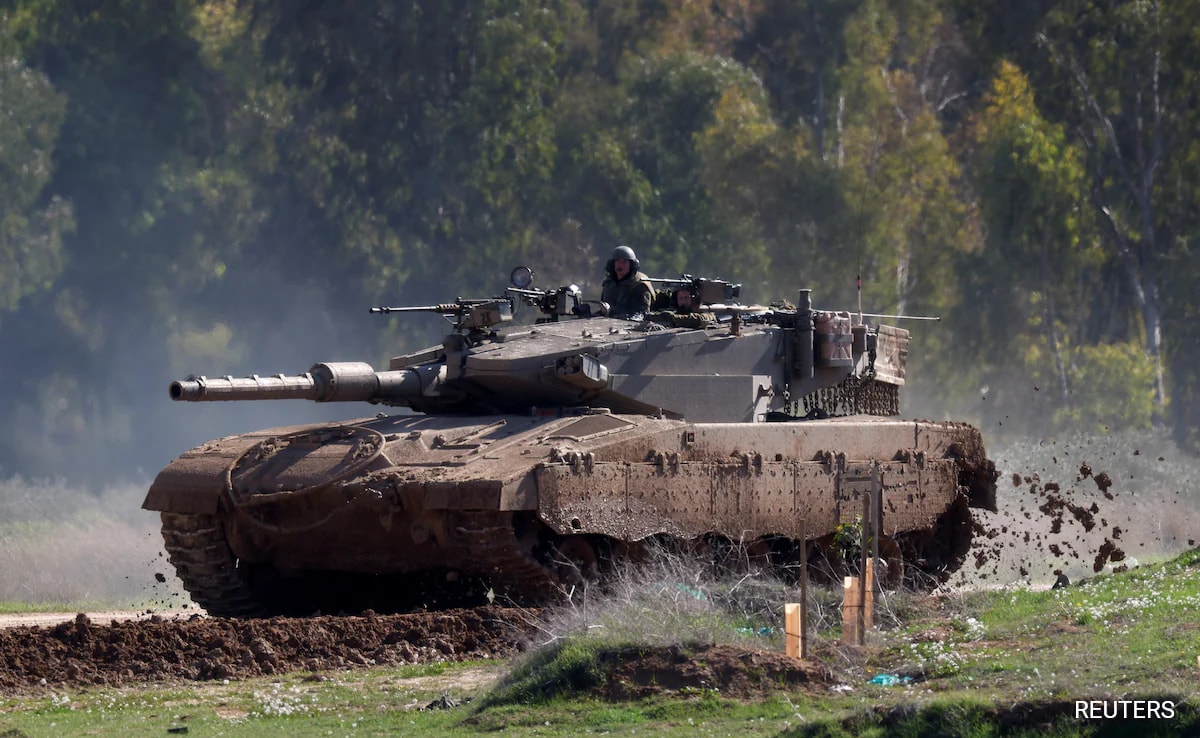
Hamas launched an unprecedented attack on Israel on October 7 (file photo)
The Israeli army has deployed some artificial intelligence military technology for the first time in fighting in Gaza, raising concerns about the use of autonomous weapons in modern warfare.
The military has hinted at the use of the new technology, with spokesman Daniel Hagari saying last month that Israeli forces were conducting “simultaneous above-ground and underground operations.”
The technology is destroying enemy drones and mapping Hamas’ vast network of tunnels in Gaza, a senior defense official told AFP.
New defense technologies including artificial intelligence-powered sights and robotic drones are a bright spot during a grim period for Israel’s tech industry.
By 2022, the industry accounted for 18% of GDP, but the war in Gaza has caused chaos and an estimated 8% of the workforce has been drafted.
“Overall, the war in Gaza brings threats, but also opportunities to test emerging technologies in the field,” said Avi Hasson, CEO of Israeli tech incubator Startup Nation Central.
“Whether it’s on the battlefield or in the hospital, there are technologies that have been used in this war that have not been used in the past.”
But Mary Wareham, a weapons expert at Human Rights Watch, told AFP that the rising civilian death toll showed the need for greater oversight of the use of new defense technologies.
“Now we are facing some of the worst death and suffering we have seen today – some of it brought about by new technologies,” she said.
In December, more than 150 countries backed a United Nations resolution that identified “serious challenges and concerns” about new military technologies, including “artificial intelligence and weapons system autonomy.”
‘angry Birds’
According to AFP statistics based on official statistics, Hamas launched an unprecedented attack on Israel on October 7, resulting in the death of approximately 1,160 people in Israel, most of whom were civilians.
Hamas has also held about 250 hostages, and Israel says about 132 hostages remain in Gaza, of which at least 29 are believed to have been killed.
Israel’s military response has killed nearly 28,000 people in Gaza, mostly women and children, according to the Hamas-ruled region’s health ministry.
Like many other modern conflicts, this war was caused by the proliferation of cheap unmanned aerial vehicles (UAVs), also known as drones, which made aerial attacks easier and cheaper.
Hamas used them to drop explosives on October 7, while Israel used new technology to shoot them down.
First, the military is using artificial intelligence optical sights made by Israeli startup Smart Shooter, which are mounted on weapons such as rifles and machine guns.
“It helps our soldiers intercept drones because Hamas uses a lot of drones,” the senior defense official said.
“It turns every ordinary soldier – even a blind soldier – into a sniper.”
Another system for suppressing drones involves deploying a friendly drone with a net that can be dropped around enemy aircraft to suppress them.
“It’s drone versus drone – we call it ‘Angry Birds,'” the official said.
Hamas Tunnel
A pillar of Israeli Prime Minister Benjamin Netanyahu’s vow to “destroy” Hamas is to quickly map the network of underground tunnels where Israel says the group’s militants are hiding and holding hostages.
The network is so vast that the military calls it the “Gaza Metro,” and a recent study by the U.S. Military Academy at West Point said there are 1,300 tunnels stretching more than 500 kilometers (310 miles).
To map the tunnels, the military has used drones that use artificial intelligence to learn to detect humans and can operate underground, including one made by Israeli startup Robotican that houses a drone inside a robotic box.
A senior Israeli defense official said it was used in Gaza “to enter tunnels and observe what communications allowed.”
The official added that before the war, the technology did not allow drones to operate underground due to problems with sending images to the surface.
The conflict raised human rights issues but also cemented Israel’s position as the world’s leading manufacturer of cutting-edge defense systems.
The Wall Street Journal reported last month that the United States, Israel’s main international ally and providing billions of dollars in annual military aid, is training its own soldiers to shoot down drones using optical sights from smart shooters.
In late January, three U.S. soldiers were killed in a drone strike on a base in Jordan.
(Except for the headline, this story has not been edited by NDTV staff and is published from a syndicated feed.)
Follow us on Google news ,Twitter , and Join Whatsapp Group of thelocalreport.in













